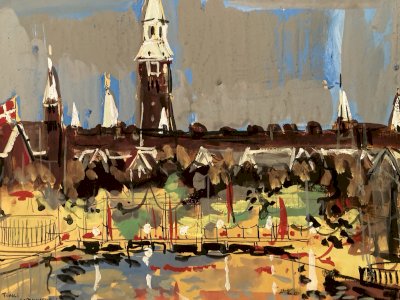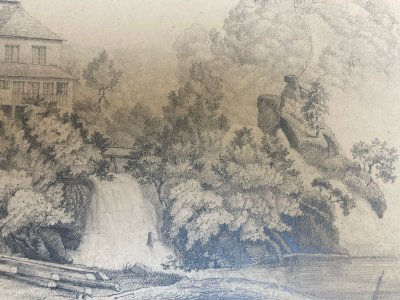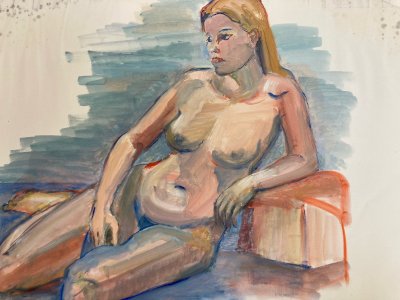- Sell Now
- Home
-
FURNISH
All STORAGE FURNITURE • Wardrobe • Chests of drawers, Chiffonnier • Sideboard • Shelves, Bookshelves • File cabinet • Sewing Furniture • Bar cabinet • TV Stand • Trunk, Chest TABLE & BEDSIDE TABLE • Dinner Table • Coffee table, side table, end table & Bedside • Console, Pedestal table & Selette • Serving Table, Trolley • Card Table • Draper's counter & table SEAT • Sofa • Armchair • Chair • Stool • Bench • Daybed • Beanbag & Footrest • Deckchair & Outdoor DESK, SECRETARY, DRESSING TABLE GARDEN LOUNGE BEDDING • Bed • Bedhead • Cradle, Moses basket CRAFT FURNITURE, WORKSHOP • Workbench • Stool, Ladder, Step • Easel & Trestle SCREEN PIANO
-
DECORATE
All TO PUT • Sculpture, Statuette • Vase & Planter • Dame Jeanne, Bonbonne & Flacon • Bridal globe, Dome • Pin tray, Ashtray • Candlestick & Candle • Photo frame • Stone, Fossil, Mineral • Earth Globe MIRROR WALL DECORATION • Painting • Engraving & Illustration • Poster • Tapestry • Wall Frame • Plate & Sign • Juju Hat & Wall Paniel • Mask • Hunting Trophy • Other object to hang CLOCK, PENDULUM & ALARM CLOCK ARRANGEMENT • Jar, Box & Case • Basket, Wastebasket & Crates • Magazine Rack & Vinyl Holder • Display & Spinner • Coat hook & Coat rack • Furniture Valet & Mannequin • Towel Holder • Suitcase & Travel Bag • Bottle Rack • Umbrella holder BATHROOM OFFICE • Mail holder • Bookends • Sulphide & Paperweight • Stationery FIREPLACE ACCESSORIES HOBBIES • Vintage Sport • Music • Vintage device • Smoking Item • Militaria, Ancient weapon • Miniature Vehicle • Game, Playing Cards • Collection object & Curiosity BIRD CAGE RELIGION, SPIRITUALITY
- TEXTURE
- ILLUMINATE
-
ACCOMODATE
All TABLE & SERVING • Plate • Silverware • Knife Holder • Glass • Bowl, Mug, Cup • Bowl, Ramekin & Cup • Dish, Cup & Salad Bowl • Tray, Basket & Server • Table Mat • Pitcher, Carafe, Bottle, Tea & Coffee Jug • Ice Bucket • Salt & Pepper shakers, Oil & Vinegar shakers • Sugar and jam maker • Gravy boat • Butter dish • Egg cup • Terrine OLD BALANCE CUTTING BOARD GRINDER CASSEROLE, SAUCEPAN & PAN KITCHEN UTENSIL & ACCESSORY
- TINKER
- KIDS
- Jewelry & Accessories
Login
Description
Good general condition, see photo. This artwork comes from a part of the studio's collection that was in a drawing box, see attached photo; other works are available in my shop featuring abstract pieces from the 1930s and drawings from the Art Brut period after the 1950s. ⸻ ⸻ Biography of Jeanne Kosnick-Kloss (1892 – after 1966) Jeanne Kosnick-Kloss, born in 1892, is a Franco-German artist whose work traverses several major currents of modern art: abstraction, engaged art, and a freer vein, close to Art Brut, in the last decades of her life. She is also known for her artistic and personal collaboration with Otto Freundlich, a major figure in spiritual abstraction. ⸻ ? Training and early years Few details are known about her initial training, but she was active in Paris as early as the 1920s. She frequented avant-garde circles, where she met Otto Freundlich, a German-born sculptor and theorist of abstraction, with whom she shared her life and studio. She became an essential collaborator of Freundlich, participating in his work, sharing his ideas on the universality of art and the spirituality of forms. ⸻ ? Abstract period (1920s-1930s) In the 1930s, Kosnick-Kloss developed a rhythmic geometric abstraction, influenced by constructivism, orphism (by Robert and Sonia Delaunay), and theories of color. She produced gouaches and drawings dominated by circles and spirals, evoking cosmic harmony. She was in contact with Sonia Delaunay, with whom she shared a colorist sensibility and an interest in integrating art into everyday life (clothing, textiles, objects). Although less known, Kosnick-Kloss participated in this female ecosystem of abstraction, often eclipsed by official history. ⸻ ? Political engagement and exile With the rise of Nazism, Kosnick-Kloss and Freundlich exiled themselves to the south of France. Otto Freundlich, of Jewish origin and considered by the Nazis as a representative of "degenerate art," was arrested in 1943 and deported to Majdanek, where he was murdered. Jeanne survived the war and preserved the legacy of their joint work. Her post-war work, more free and intuitive, seems marked by this trauma. ⸻ ? Art Brut / free expression period (1950s-1960s) In the 1950s-60s, Jeanne Kosnick-Kloss adopted a more spontaneous plastic writing, marked by irregular shapes, primitive figures, and personal symbols. This vein likens her to Art Brut or a form of naive expressionism, in line with Dubuffet. She pursued a discreet but coherent body of work, affirming a deeply personal aesthetic, on the margins of dominant currents. ⸻ Legacy and recognition Jeanne Kosnick-Kloss remains today an unknown but significant figure of European abstraction. Her work is inseparable from that of Otto Freundlich, of whom she was the artistic partner and guardian of memory after the war. She continues to be rediscovered through exhibitions dedicated to Freundlich or female abstraction. Type: Pastel Style: 1940-1960 Genre: Art brut, Outsider art Features: On Paper Theme: Animals
Réf :
#337870
Related Products
Comments
Pastel on Paper 1940 Jeanne Kosnick Kloss Art Brut Ancient Bird
850€
31500 Toulouse
Ce site contient des liens d’affiliation pour lesquels je peux recevoir une compensation.
Description
Good general condition, see photo. This artwork comes from a part of the studio's collection that was in a drawing box, see attached photo; other works are available in my shop featuring abstract pieces from the 1930s and drawings from the Art Brut period after the 1950s. ⸻ ⸻ Biography of Jeanne Kosnick-Kloss (1892 – after 1966) Jeanne Kosnick-Kloss, born in 1892, is a Franco-German artist whose work traverses several major currents of modern art: abstraction, engaged art, and a freer vein, close to Art Brut, in the last decades of her life. She is also known for her artistic and personal collaboration with Otto Freundlich, a major figure in spiritual abstraction. ⸻ ? Training and early years Few details are known about her initial training, but she was active in Paris as early as the 1920s. She frequented avant-garde circles, where she met Otto Freundlich, a German-born sculptor and theorist of abstraction, with whom she shared her life and studio. She became an essential collaborator of Freundlich, participating in his work, sharing his ideas on the universality of art and the spirituality of forms. ⸻ ? Abstract period (1920s-1930s) In the 1930s, Kosnick-Kloss developed a rhythmic geometric abstraction, influenced by constructivism, orphism (by Robert and Sonia Delaunay), and theories of color. She produced gouaches and drawings dominated by circles and spirals, evoking cosmic harmony. She was in contact with Sonia Delaunay, with whom she shared a colorist sensibility and an interest in integrating art into everyday life (clothing, textiles, objects). Although less known, Kosnick-Kloss participated in this female ecosystem of abstraction, often eclipsed by official history. ⸻ ? Political engagement and exile With the rise of Nazism, Kosnick-Kloss and Freundlich exiled themselves to the south of France. Otto Freundlich, of Jewish origin and considered by the Nazis as a representative of "degenerate art," was arrested in 1943 and deported to Majdanek, where he was murdered. Jeanne survived the war and preserved the legacy of their joint work. Her post-war work, more free and intuitive, seems marked by this trauma. ⸻ ? Art Brut / free expression period (1950s-1960s) In the 1950s-60s, Jeanne Kosnick-Kloss adopted a more spontaneous plastic writing, marked by irregular shapes, primitive figures, and personal symbols. This vein likens her to Art Brut or a form of naive expressionism, in line with Dubuffet. She pursued a discreet but coherent body of work, affirming a deeply personal aesthetic, on the margins of dominant currents. ⸻ Legacy and recognition Jeanne Kosnick-Kloss remains today an unknown but significant figure of European abstraction. Her work is inseparable from that of Otto Freundlich, of whom she was the artistic partner and guardian of memory after the war. She continues to be rediscovered through exhibitions dedicated to Freundlich or female abstraction. Type: Pastel Style: 1940-1960 Genre: Art brut, Outsider art Features: On Paper Theme: Animals
Réf :
#337870
 English
English  Français
Français 


















